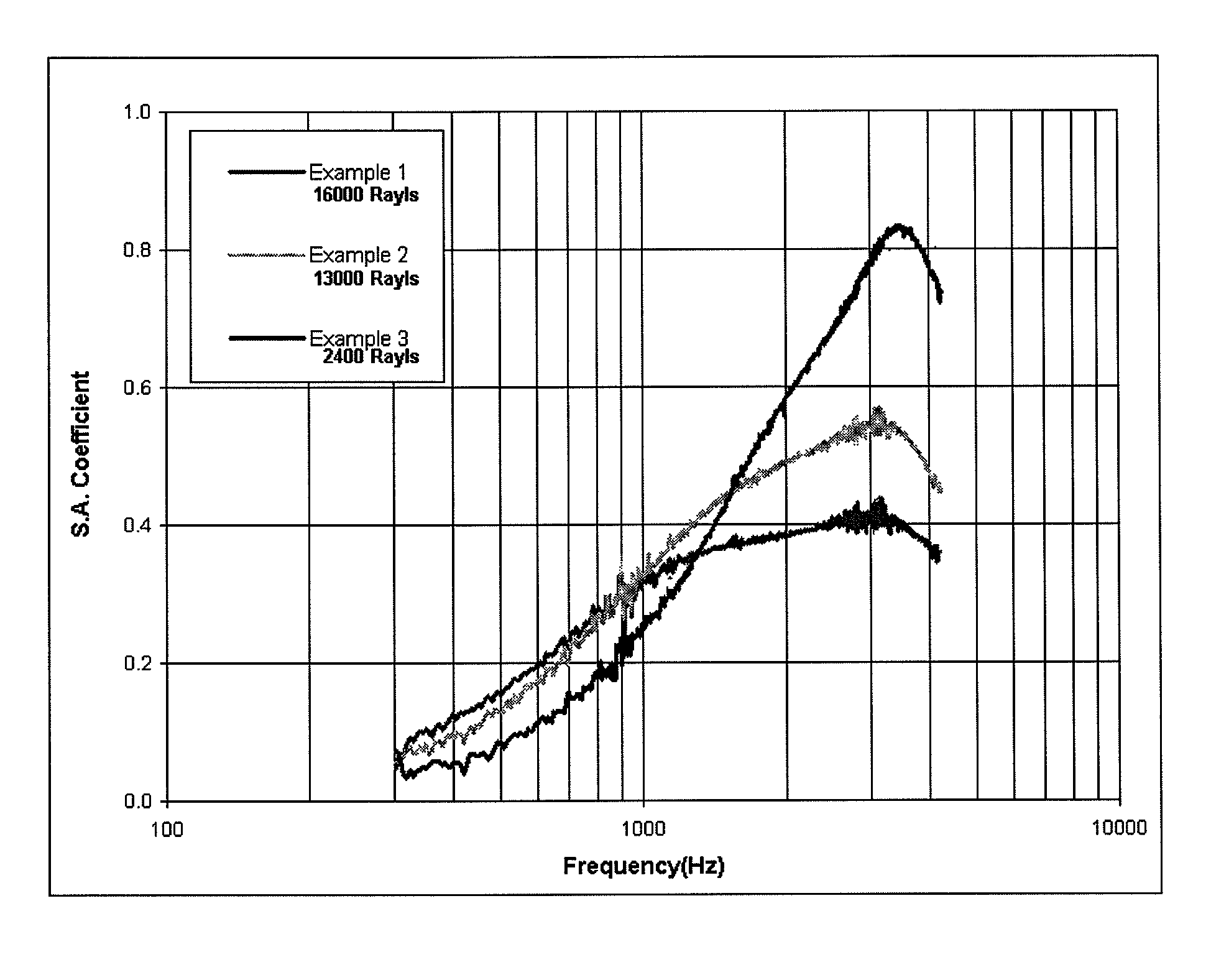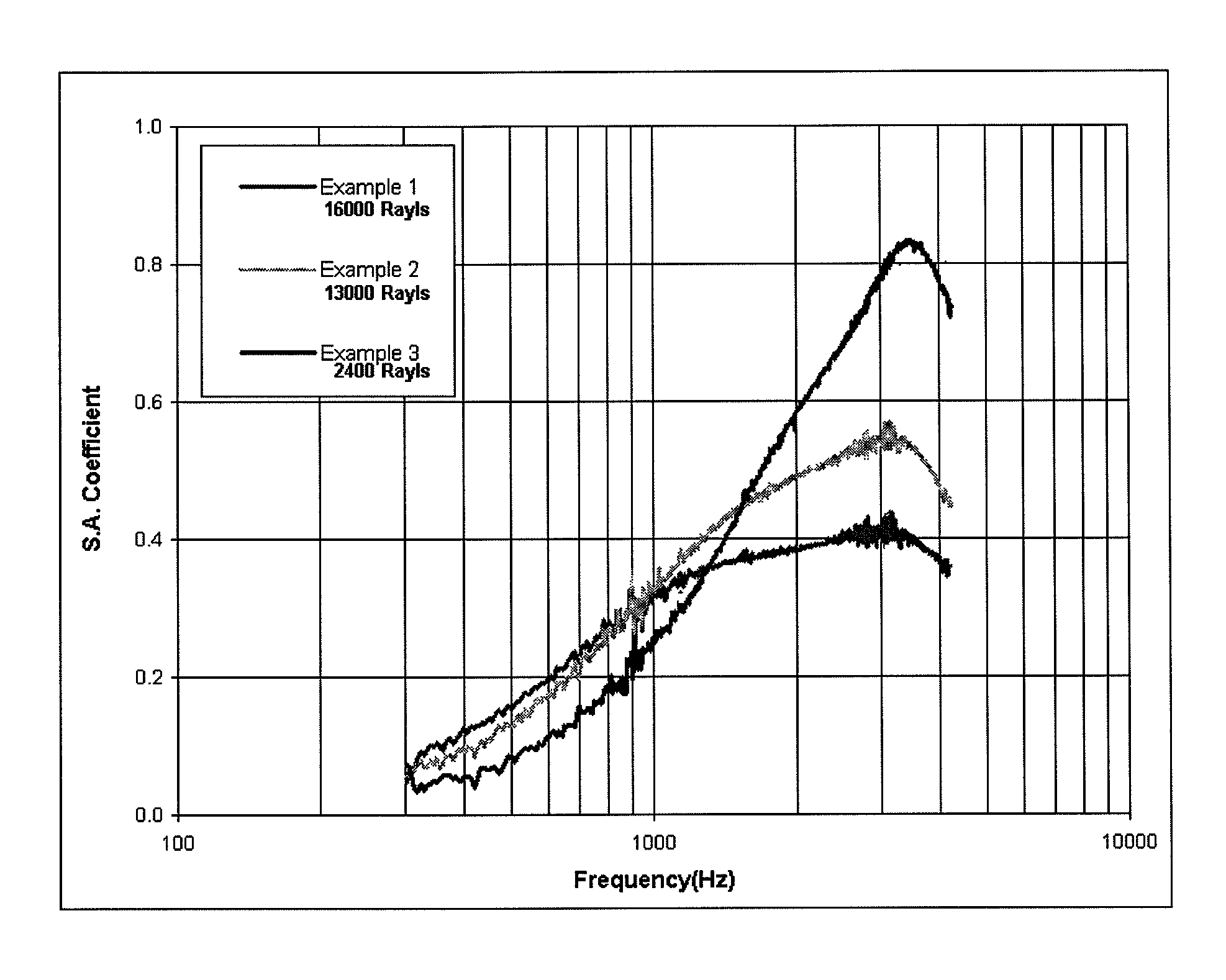Foam laminate product and process for production thereof
a technology of foam laminate and product, which is applied in the direction of layered products, roofs, transportation and packaging, etc., can solve the problems of compromising the strength and stiffness properties of the laminate, and the sound absorption properties of the foam laminate products produced in this manner are not very good, so as to improve the sound absorption and sound absorption. , the effect of improving the sound absorption and the desirable strength and stiffness
- Summary
- Abstract
- Description
- Claims
- Application Information
AI Technical Summary
Benefits of technology
Problems solved by technology
Method used
Image
Examples
examples 1-3
[0083]In the Examples, the following materials were used
[0084]Core foam (thickness=8 mm)—Polyurethane foam have a density of 40 kg / m3 pounds per cubic foot commercially available from Woodbridge Foam Corporation under the tradename StrataLiner 1825;
[0085]Adhesive layer—High density polyethylene film commercially available from the Dow Chemical Company; and
[0086]Fibrous layer—chopped fibreglass rovings—Commerially available from Vetrotex Saint-Gobain under the tradename Vetrotex 221 113 SMC.
[0087]Various samples of an initial foam laminate material were produced as follows. A blank or stack of the following layers was prepared:
[0088]adhesive layer;
[0089]fibrous layer;
[0090]core foam;
[0091]fibrous layer; and
[0092]scrim layer.
[0093]Each blank or stack was manually passed through a Meyer Laminator, consisting of an adjacent heating zone and cooling zone. The process parameters for lamination were as follows:
[0094]conveyor speed: 6 m / min-7 m / min;
[0095]hot Platens temp.: 180° C.-200° C.;
[...
PUM
| Property | Measurement | Unit |
|---|---|---|
| thickness | aaaaa | aaaaa |
| thickness | aaaaa | aaaaa |
| pressure | aaaaa | aaaaa |
Abstract
Description
Claims
Application Information
 Login to View More
Login to View More - R&D
- Intellectual Property
- Life Sciences
- Materials
- Tech Scout
- Unparalleled Data Quality
- Higher Quality Content
- 60% Fewer Hallucinations
Browse by: Latest US Patents, China's latest patents, Technical Efficacy Thesaurus, Application Domain, Technology Topic, Popular Technical Reports.
© 2025 PatSnap. All rights reserved.Legal|Privacy policy|Modern Slavery Act Transparency Statement|Sitemap|About US| Contact US: help@patsnap.com


